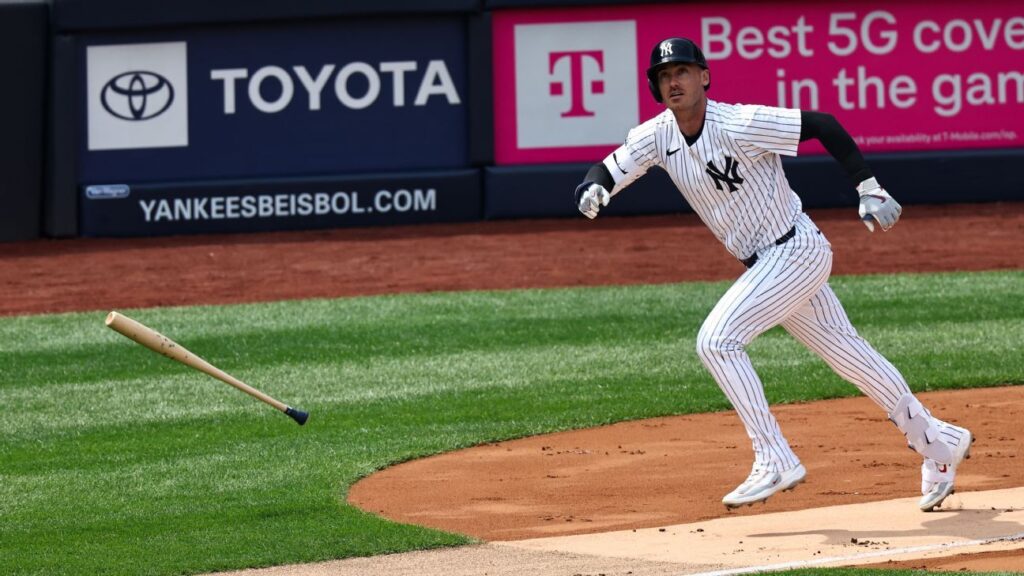The Emergence of Torpedo Bats in Major League Baseball
On a remarkable Saturday at Yankee Stadium, a pivotal moment occurred in baseball history surrounding the New York Yankees’ innovative use of what’s known as the torpedo bat. This bat, characterized by its distinctive design, has sparked a fascinating conversation regarding the future of batting in Major League Baseball (MLB).
A Transformative Discussion
During a spring training session, members from the Yankees organization shared insights with broadcaster Michael Kay about how the analytics department had influenced player equipment choices. By providing data on optimal contact points for batting, players were encouraged to adapt their gear accordingly. This alignment between analytics and equipment design set the stage for the introduction of the torpedo bat.
The Torpedo Bat Debuts
On the day in question, the Yankees showcased their new approach by hitting four home runs in the first inning. Kay, during the broadcast, highlighted Jazz Chisholm Jr.’s bat, mentioning its significant barrel size and unique shape. His remarks led to a booming social media response that illustrated the blend of traditional baseball and modern analytics.
The Immediate Impact
As the game progressed, Chisholm recorded a hit, and shortly after, teammate Anthony Volpe followed suit with a home run, utilizing a similar bat design. This performance not only generated excitement in the ballpark but also prompted inquiries from reporters observing the action. Within hours, videos highlighting the new bat’s effectiveness circulated widely across social media platforms. The result was an overwhelming response from players and teams keen to explore this groundbreaking equipment.
Industry Response
In the subsequent days, orders for torpedo bats surged within the baseball community. Victus, the manufacturer behind the innovation, quickly ramped up production to meet demand, with multiple teams requesting access to the newly popularized equipment. Jared Smith, CEO of Victus, noted the unprecedented level of interest in the new bat design, mirroring the initial excitement in baseball equipment innovation over a decade.
A Historical Perspective
While the torpedo bat soared to prominence rapidly, its design had roots dating back to 2021. The concept was initially shared with several teams and underwent various trials with major leaguers like Nico Hoerner and Cody Bellinger, who provided critical feedback on its performance. As more players recognized its peculiar shape and potential, the bat evolved into a mainstream contender.
Analyzing Design and Performance
Coaches and players began to assess how the unique qualities of the torpedo bat could impact hitting strategies. This development sparked discussions on tailoring bats to suit individual players’ swings, akin to personalized golf clubs. This data-driven approach is reflective of modern advancements in sports, where analytics play a crucial role in refining athlete performance.
Legal and Regulatory Considerations
Concerns about the legal status of the torpedo bat were addressed by MLB officials, confirming it adheres to the sport’s specifications. While some critics likened its shape to equipment used in slow-pitch softball, there was an overall sentiment of excitement amongst officials about its potential to enhance gameplay.
Future Prospects
As interest in the torpedo bat continues to escalate, teams are eager to integrate these bats into their training routines. With the 2025 MLB season approaching, the industry anticipates further experimentation with bat designs that can optimize performance based on player styles.
Conclusion
Whether this recent wave of enthusiasm for the torpedo bat will lead to lasting changes in baseball remains to be seen. But what is clear is the intersection of technology and tradition has sparked a renewed interest in equipment innovation. Fans and players alike will be observing closely as the season unfolds, eager to see how these developments alter the fabric of the game.
This article draws from contributions by notable journalists including Jeff Passan, Jorge Castillo, and others, shedding light on one of the most intriguing developments in the history of baseball.
